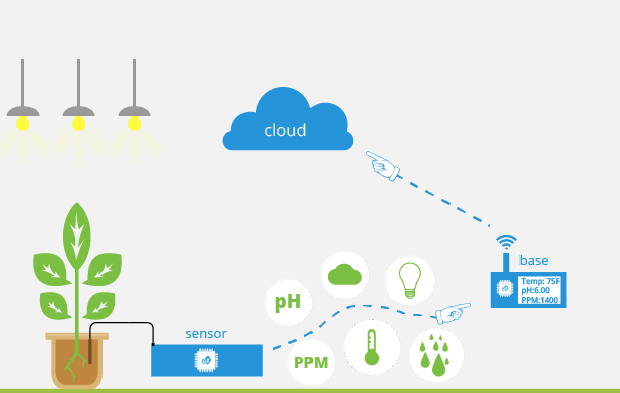
With the growing adoption of the Internet of Things (IoT), connected devices have penetrated every aspect of our life, from health and fitness, home automation, automotive and logistics, to smart cities and industrial IoT.
Thus, it is only logical that IoT, connected devices, and automation would find its application in our own kitchen garden and as such, tremendously improve nearly every facet of it. How could one still rely on plows when self-driving cars and virtual reality are no longer a sci-fi fantasy but an everyday occurrence?
Farming has seen several technological transformations in the last decades, becoming more industrialized and technology-driven. By using various smart agriculture gadgets, farmers have gained better control over the process of growing crops, making it more predictable and improving its efficiency.
What is smart agriculture? The definition and market size
Smart agriculture denotes the application of IoT solutions in agriculture. The same applies to the smart farming definition.
The adoption of IoT solutions for agriculture is constantly growing. Namely, BI Intelligence predicts that the number of agriculture IoT device installations will hit 75 million by 2020, growing 20% annually.
At the same time, the global smart agriculture market size is expected to triple by 2025, reaching $15.3 billion (compared to being slightly over $5 billion back in 2016).
How does Smart Agriculture work?
Real time data is read from the farm like, plant growth, nutrient level, moisture level, humidity, ph of the growing medium and transmitted over the WIFI and uploaded in the cloud from which after analytics notifications are sent to users to take corrective actions.
The Benefits of smart farming: How’s IoT shaping agriculture
Technologies and IoT have the potential to transform agriculture in many aspects. Namely, there are 5 ways IoT can improve agriculture:
- Data detrimental to growth of plants collected by smart agriculture sensors in real time and send as notifications to your smartphone, e.g. moisture and humidity, soil quality or ph of the soil. This data can be used to track your garden’s health and act on them.
- Better control over the issues at the onset as a result, take preventives much in advance. The ability to foresee the problems affecting your garden can help us sort out problems with safer options and help curb use of more potent pesticides.
- Cost management and waste reduction thanks to the increased control over the production. Being able to see any anomalies in the crop growth one will be able to mitigate the risks of losing your yield.
- Increased business efficiency through process automation. By using smart devices, you can automate multiple processes across your production cycle, e.g. irrigation, fertilizing, or pest control.
- Enhanced product quality and volumes. Achieve better control over the production process and maintain higher standards of crop quality and growth capacity through automation.
As a result, all of these factors can eventually lead to higher revenue.
Some of the IoT applications in agriculture in general:
- Automated drip irrigation
Applying IOT Agriculture will ensure that mundane tasks like watering can be automated.
- Monitoring of moisture to trigger drip irrigation
Smart farming sensors monitors the humidity and moisture level in the plant roots. This data can help us to intelligent decisions like reducing the water quantity or not to water at all.
- Monitoring the ph of growth medium
Smart Agriculture will monitor the ph of the growth medium much in advance so that it can be rectified rather than wait for post-mortem corrective actions.
- Monitoring the nutrients in the growth medium
Instead of making intuitive and inexact decisions regarding what fertiliser to use and how much, applying IOT in agriculture ensures that accurate Nitrogen, Phosphorus and Potassium levels are monitored and maintained.
Smart Agriculture is the Future!
Applying Data analytics to our kitchen farms will revolutionise agriculture. Farming will not be the same again with powerful data analytics capabilities and predictive algorithms. The future is here.